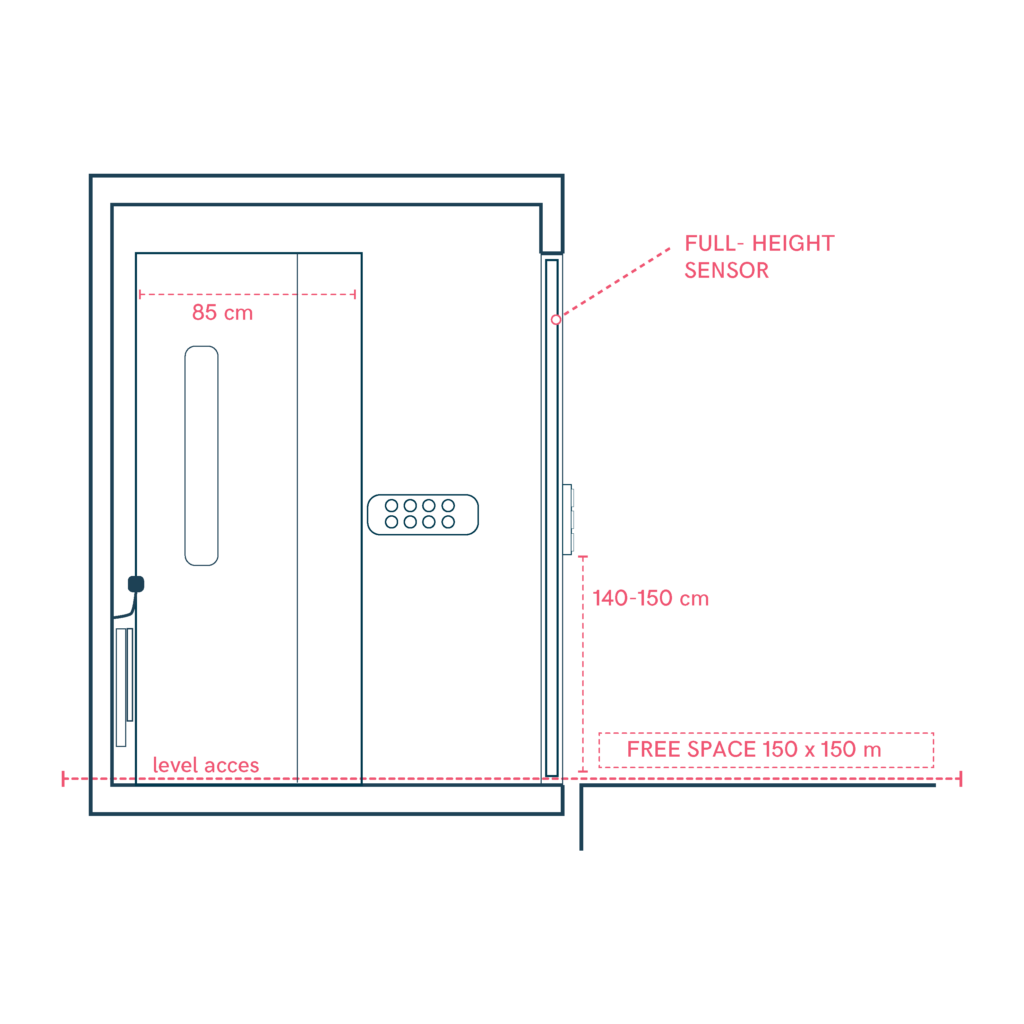Entry, Door, and Safety Features in Elevators
In addition to the cabin, the elevator’s entry and door mechanisms play a crucial role in accessibility. Automatic doors with sensors, wide enough to allow easy entry, are essential for users with mobility aids. The space surrounding the elevator should allow for smooth navigation and efficient use, with clearly marked call buttons and floor indicators. Safety features such as aligned floors upon arrival and non-slip surfaces are critical in ensuring safe and effortless use for all individuals.

- Doors should open automatically with a minimum width of 85 cm to accommodate mobility aids like wheelchairs, walkers, or strollers.
- Use full-height sensors to ensure that the doors only close once the area is clear, preventing any obstruction or accidents.
- The elevator floor must align with the building floor when it stops to allow smooth entry and exit without any height difference.
- The entryway should provide at least 150 cm x 150 cm of unobstructed space to ensure easy maneuvering of wheelchairs, strollers, or any mobility devices.
- The call button should be installed at a height of 140-150 cm, with clear numbering and tactile feedback. It should be positioned to be within reach of most users.
- Ensure the area surrounding the elevator entrance has non-slip flooring, free from rugs or obstacles, to maintain a safe environment.
Sources
- https://accessible-eu-centre.ec.europa.eu/content-corner/digital-library/en-172102021-accessibility-and-usability-built-environment-functional-requirements_en
- https://www.access-board.gov/adaag-1991-2002.html#2.%20GENERAL
- https://universaldesign.ie/built-environment/building-for-everyone/building-for-everyone-full-series
- https://www.codigotecnico.org/pdf/Documentos/SUA/DccSUA.pdf
- Carers
- Children
- Cognitive
- Cognitive abilities
- Decolonial perspective
- Digital
- Digital barrier
- Enviroment
- Environmental
- Gender and generations
- Gender perspective
- Hearing impairment
- Low-education
- Low-income
- Older people
- Other
- Physical abilities and features
- Sensory and Physical
- Socioeconomic
- Visual impairment